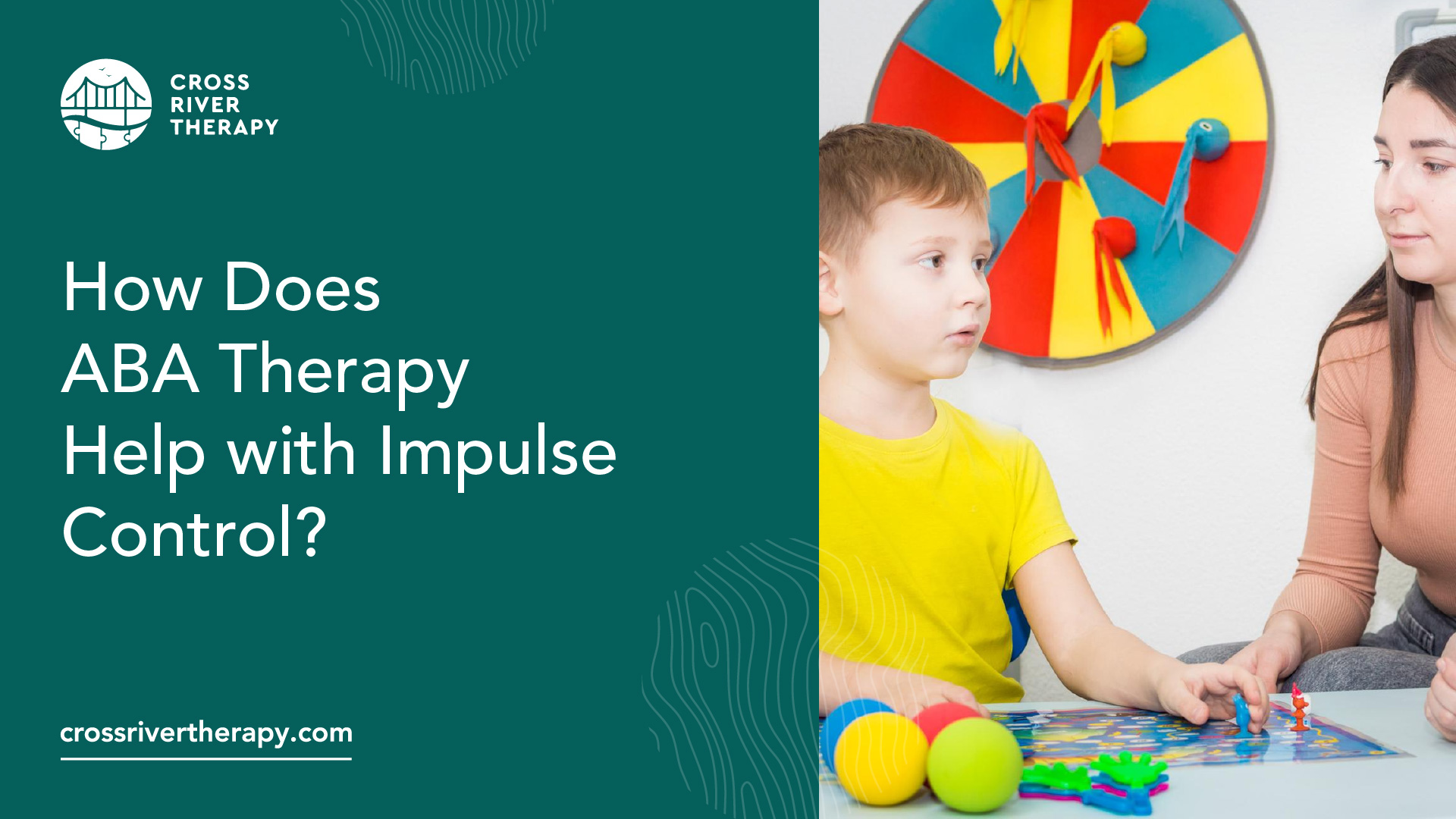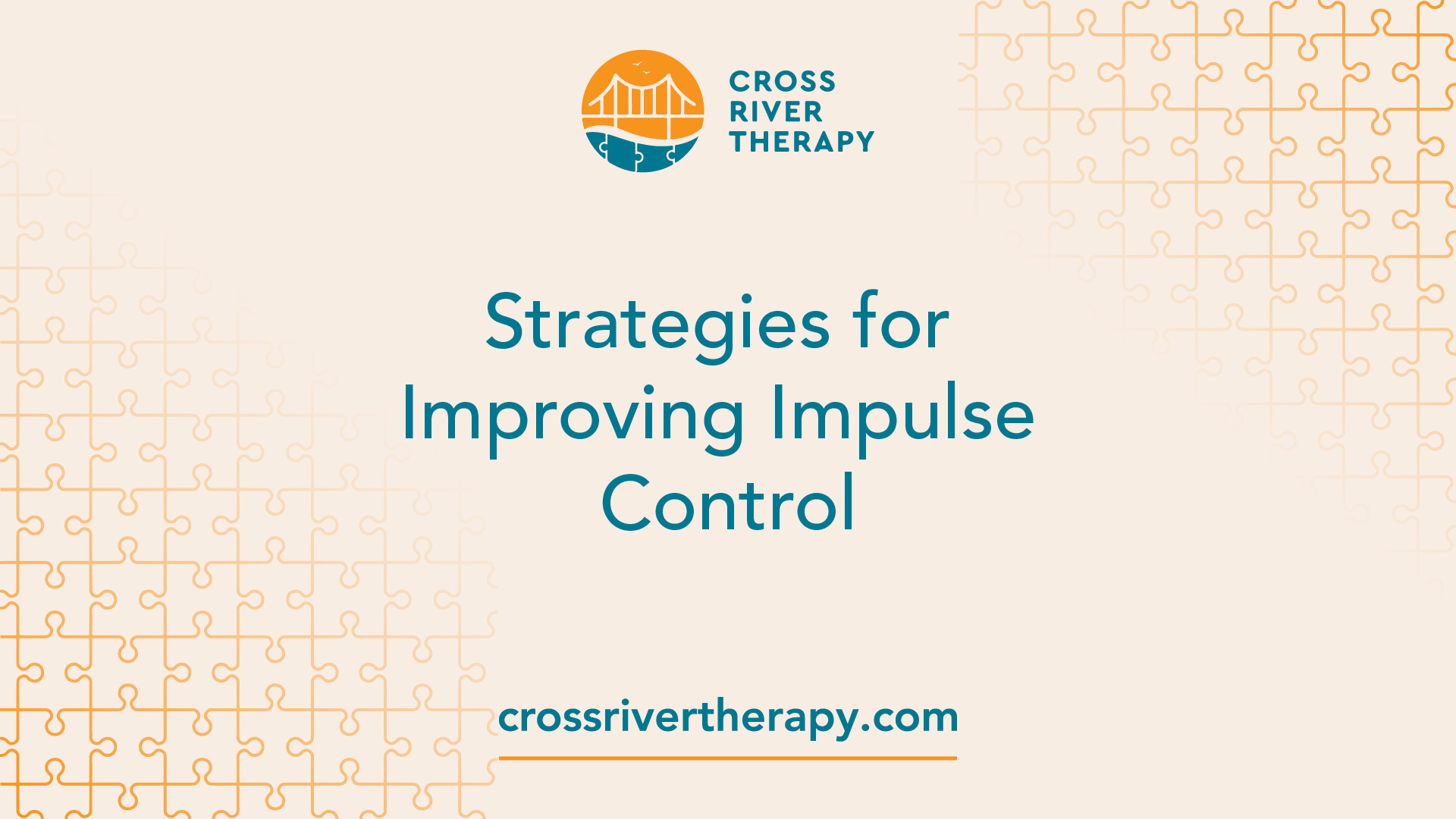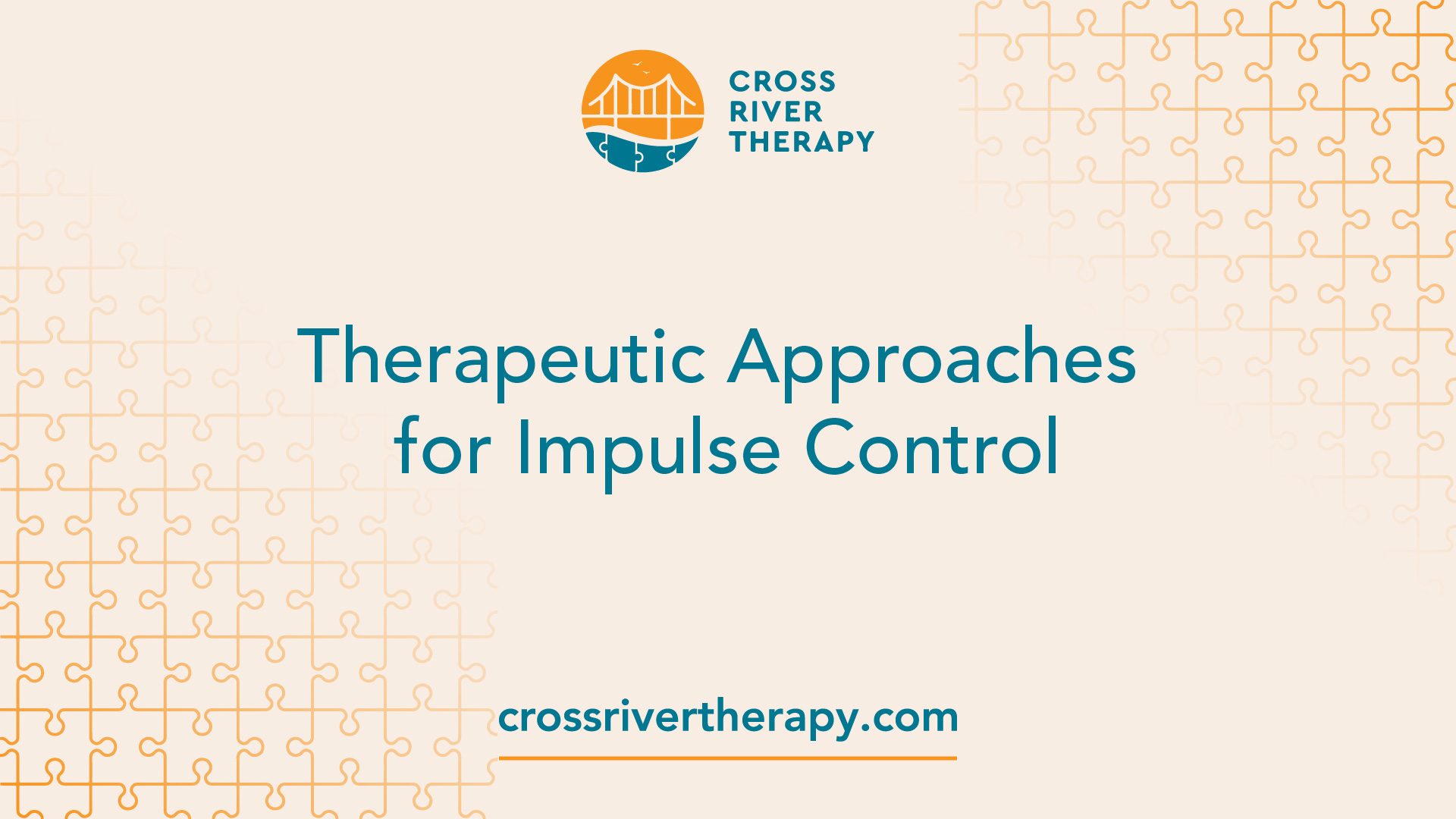How Does ABA Therapy Help with Impulse Control?
Discover how ABA therapy empowers children with autism to conquer impulse control challenges for a brighter future.

Understanding Impulse Control in Autism
Impulse control challenges are commonly experienced by individuals with autism, affecting their ability to manage and regulate their urges, emotions, and behaviors. These challenges can manifest in various ways and may pose difficulties in daily life. Understanding the nature of these challenges and the importance of self-regulation is crucial for providing effective support and intervention.
Challenges Faced
Autism is a spectrum disorder that affects individuals in unique ways, ranging from mild to severe symptoms. Alongside difficulties in social interactions, communication, and sensory processing, individuals with autism may struggle with impulse control. Some common challenges include:
- Difficulties in managing emotions: Individuals with autism may find it challenging to regulate their emotions, leading to emotional outbursts or difficulties in expressing their feelings appropriately.
- Impulsive response to sensory stimuli: Sensory overload can trigger impulsive reactions in individuals with autism. They may have difficulty filtering sensory information and may react impulsively to certain sensory experiences.
- Struggles with changes in routines: Individuals with autism often rely on predictability and routine. Changes in routines can be challenging to navigate, leading to impulsive behaviors as they struggle to adapt to new situations.
Importance of Self-Regulation
Developing self-regulation skills is crucial for individuals with autism to effectively manage impulse control challenges. Self-regulation encompasses the ability to manage one's thoughts, emotions, and behaviors in a manner that promotes adaptive functioning and overall well-being [1].
By acquiring self-regulation skills, individuals with autism can:
- Improve emotional regulation: Self-regulation allows individuals to understand and manage their emotions effectively, helping them respond to different situations in a more controlled manner.
- Enhance decision-making: With improved impulse control, individuals can make thoughtful and deliberate decisions, considering the consequences of their actions.
- Promote adaptive behaviors: Developing self-regulation skills enables individuals to engage in more appropriate and socially acceptable behaviors, fostering positive interactions and relationships.
- Increase independence: Self-regulation empowers individuals to navigate daily life with greater independence, making choices that align with their goals and values.
It is important to note that various therapeutic approaches, including Applied Behavior Analysis (ABA), cognitive strategies, and social skills training, can assist in improving impulse control in individuals with autism. These approaches aim to provide individuals with the necessary skills and strategies to effectively manage their impulses and develop self-regulation techniques. To learn more about ABA therapy and how it can support individuals with autism in developing impulse control, visit our article on ABA therapy for autism spectrum disorder.
By understanding the challenges faced by individuals with autism in relation to impulse control and the significance of self-regulation, caregivers and professionals can work together to implement strategies that support individuals in managing their behaviors and emotions effectively.
Strategies for Improving Impulse Control

When it comes to improving impulse control in individuals with autism, various strategies can be employed to help them develop self-regulation skills and manage impulsive behaviors. Three effective approaches in this regard are sensory integration techniques, cognitive behavioral therapy (CBT), and occupational therapy (OT).
Sensory Integration Techniques
Sensory integration techniques focus on addressing sensory needs and promoting self-regulation in individuals with autism. These techniques aim to help individuals process sensory information in a more organized manner, which can, in turn, reduce impulsive behaviors. Some common sensory integration techniques include:
- Deep pressure therapy: Applying firm and gentle pressure on specific areas of the body can help individuals with autism regulate their sensory processing and promote a sense of calmness.
- Sensory breaks: Encouraging regular breaks during activities can provide individuals with the opportunity to engage in sensory activities that help them regulate their sensory system.
- Sensory-rich environments: Creating environments that offer a variety of sensory experiences can help individuals with autism manage their impulses and enhance their sensory integration skills.
Cognitive Behavioral Therapy (CBT)
CBT is a therapeutic approach that focuses on the connection between thoughts, emotions, and behaviors. It can be beneficial for individuals with autism in improving impulse control and self-regulation. CBT techniques aim to help individuals identify and challenge negative or impulsive thoughts, develop coping strategies, and replace maladaptive behaviors with more appropriate ones. Some strategies used in CBT for improving impulse control include:
- Mindfulness and meditation: Teaching individuals with autism techniques for mindfulness and meditation can help them develop awareness of their thoughts and emotions, promoting better impulse control.
- Self-reflection and journaling: Encouraging individuals to reflect on their behaviors and emotions through journaling can enhance self-awareness and facilitate the development of healthier coping mechanisms.
Occupational Therapy (OT)
OT is a holistic approach that focuses on improving individuals' functional skills and independence in daily activities. In the context of impulse control challenges, OT can play a significant role in addressing sensory regulation, motor skills, and self-regulation. Occupational therapists work with individuals with autism to develop strategies and skills that promote impulse control and self-regulation. Some areas of focus in OT for improving impulse control include:
- Sensory regulation: Occupational therapists help individuals develop sensory regulation techniques to manage sensory sensitivities and avoid impulsive reactions.
- Motor skills development: Enhancing fine motor skills can contribute to improved impulse control as individuals gain better control over their movements and actions.
- Self-regulation strategies: Occupational therapists work with individuals to develop personalized strategies for self-regulation, such as visual supports, schedules, and self-monitoring techniques.
By implementing these strategies, individuals with autism can improve their impulse control and develop healthier ways of responding to their environment. It's important to consult professionals, such as behavior analysts and occupational therapists, to determine the most suitable strategies for each individual's unique needs.
Therapeutic Approaches for Impulse Control

When it comes to addressing impulse control challenges in individuals with autism, several therapeutic approaches are available. These approaches aim to provide strategies and interventions to help individuals develop better impulse control skills. Three commonly used therapeutic approaches for improving impulse control in individuals with autism are Applied Behavior Analysis (ABA), cognitive strategies, and social skills training.
Applied Behavior Analysis (ABA)
Applied Behavior Analysis (ABA) is a widely recognized and evidence-based approach for addressing impulse control difficulties in individuals with autism. ABA focuses on understanding behavior patterns and implementing interventions to develop socially significant behaviors while reducing challenging behaviors [2]. ABA therapists work closely with individuals with autism to identify the underlying factors contributing to impulsive behaviors and develop strategies to promote self-control and regulation.
In ABA therapy, behavior analysts use techniques such as reinforcement, prompting, and shaping to teach individuals alternative, more appropriate behaviors in place of impulsive actions. The therapy sessions are tailored to the specific needs and goals of the individual, with a focus on improving self-regulation and reducing impulsive behaviors.
Cognitive Strategies
Cognitive-Behavioral Therapy (CBT) is another therapeutic approach that can be effective in improving impulse control in individuals with autism. CBT focuses on the connection between thoughts, feelings, and behaviors, aiming to help individuals recognize and modify their thoughts and responses. Through CBT, individuals learn to identify triggers and negative thought patterns that contribute to impulsive behaviors.
CBT therapists work with individuals to develop coping strategies, problem-solving skills, and cognitive restructuring techniques. These strategies help individuals with autism develop a better understanding of their thoughts and emotions, leading to improved impulse control.
Social Skills Training
Social skills training has been shown to be effective in helping individuals with autism improve their impulse control by teaching them how to recognize social cues, regulate emotions, and communicate effectively with others [3]. In social skills training, individuals with autism engage in structured activities and role-playing exercises to practice appropriate social behaviors and learn self-regulation techniques.
Therapists focus on teaching skills such as turn-taking, active listening, and perspective-taking. By developing these social skills, individuals with autism gain a better understanding of appropriate behavior in various social situations, leading to improved impulse control.
In conjunction with therapeutic approaches, it is essential to create a supportive environment and involve caregivers in the process. Structured environments and positive reinforcement techniques are crucial in promoting self-regulation and reducing impulsive behaviors. By working collaboratively, therapists, caregivers, and individuals with autism can make significant progress in improving impulse control.
To address impulse control challenges effectively, it is essential to consider individual differences, such as cognitive and sensory processing differences, as well as executive functioning deficits. By tailoring therapeutic approaches to meet the specific needs of each individual, the goal of improved impulse control can be achieved.
Factors Contributing to Impulse Control Challenges
Impulse control challenges in individuals with autism can be influenced by various factors, including cognitive and sensory processing differences as well as executive functioning deficits. Understanding these factors is crucial in developing effective strategies to address impulse control difficulties.
Cognitive and Sensory Processing Differences
Individuals with autism often experience cognitive and sensory processing differences, which can contribute to impulse control challenges. Research suggests that individuals with autism may have differences in brain structure and connectivity, particularly in areas involved in impulse control and executive functioning [4]. These differences can impact the regulation of impulses and decision-making processes.
Sensory processing challenges are commonly experienced by individuals with autism, further impacting their ability to regulate impulses. Certain sensory experiences can trigger intense reactions that manifest as impulsive or avoidant behaviors. For example, a person with autism may have difficulty processing sensory input such as loud noises or bright lights, leading to impulsive reactions or withdrawal from the situation.
Executive Functioning Deficits
Executive functioning refers to a set of cognitive processes that help individuals plan, organize, and regulate their behavior. Individuals with autism often face challenges with executive functioning, which can affect their ability to control impulses. Difficulties in areas such as working memory, cognitive flexibility, and inhibitory control can contribute to impulsive behaviors.
Deficits in executive functioning can make it challenging for individuals with autism to think before acting, consider consequences, or regulate their emotions effectively. These difficulties may lead to impulsive actions or difficulty resisting immediate gratification.
Understanding the cognitive and sensory processing differences, as well as executive functioning deficits, that contribute to impulse control challenges in autism, is essential for developing targeted interventions. By addressing these underlying factors through therapeutic approaches like ABA therapy, cognitive strategies, and social skills training, individuals with autism can learn valuable skills to improve impulse control and enhance their overall functioning.
Supportive Environment and Caregiver Role
Creating a supportive environment plays a vital role in helping individuals with autism manage their impulse control. Parents and caregivers can implement strategies to provide structure and support, while also utilizing positive reinforcement techniques.
Structured Environments
Establishing structured environments can greatly assist individuals with autism in managing their impulse control. A structured environment provides predictability and clear expectations, which can help reduce anxiety and impulsive behaviors. Here are some key elements of a structured environment:
- Consistent routines: Establishing predictable routines and schedules can help individuals with autism anticipate what comes next, promoting a sense of security and stability. Routines can be visualized using visual schedules or checklists, which further enhance predictability and understanding.
- Clear rules and expectations: Clearly defining rules and expectations helps individuals with autism understand appropriate behavior and provides a framework for self-regulation. Visual supports, such as social stories or visual cues, can be beneficial in reinforcing these rules and expectations.
- Organized physical space: Ensuring that the physical environment is organized and free from clutter can help reduce distractions and sensory overload. Providing designated areas for specific activities can also help individuals with autism focus and stay on task.
By creating a structured environment, individuals with autism can develop a sense of control and reduce impulsive behaviors. For more information on building routines, check out our article on ABA therapy for routine building.
Positive Reinforcement Techniques
Positive reinforcement techniques are effective tools for promoting and reinforcing desired behaviors in individuals with autism. These techniques involve providing rewards or praise to encourage the repetition of positive behaviors and discourage impulsive or challenging behaviors. Here are some strategies to implement positive reinforcement:
- Token systems: Token systems involve giving individuals tokens, such as stickers or tokens, as a reward for exhibiting desired behaviors. These tokens can be accumulated and exchanged for preferred items or activities. Token systems help individuals with autism understand the relationship between their behavior and the rewards they receive.
- Verbal praise and encouragement: Offering verbal praise and encouragement when individuals with autism demonstrate self-control or make progress in managing their impulses can be highly effective. Genuine and specific praise highlights their efforts and reinforces positive behaviors.
- Reward charts: Reward charts visually represent progress towards a specific goal or set of behaviors. They can be customized based on individual needs and preferences. Tracking progress on a reward chart provides motivation and a visual reminder of the positive behaviors being reinforced.
By incorporating positive reinforcement techniques, caregivers can encourage individuals with autism to develop impulse control skills and reinforce positive behavior. Remember, consistency and individualization are key when implementing these strategies.
Supportive caregivers and structured environments can greatly contribute to improving impulse control in individuals with autism. By implementing these strategies, individuals with autism can develop self-regulation skills and make progress in managing their impulses.
Addressing Co-Occurring Conditions
When it comes to addressing impulse control challenges in individuals with autism, it is important to consider co-occurring conditions that may contribute to these difficulties. Two common conditions that often coincide with autism and impact impulse control are Attention Deficit Hyperactivity Disorder (ADHD) and the use of medications.
ADHD and Impulse Control
Research suggests that up to 70% of individuals with autism also exhibit symptoms of ADHD, which can significantly impact impulse control. ADHD is characterized by difficulties in sustaining attention, hyperactivity, and impulsivity. These symptoms can further exacerbate challenges in regulating impulses, making it essential to address both conditions for improved functioning.
When ADHD and autism coexist, a comprehensive treatment approach is often recommended. Applied Behavior Analysis (ABA) therapy can be particularly effective in addressing both impulse control challenges and symptoms of ADHD. ABA therapy utilizes evidence-based techniques to teach individuals skills such as self-regulation, attention, and social interaction. By implementing strategies tailored to the specific needs of the individual, ABA therapy can help improve impulse control in individuals with autism and ADHD.
Medication Considerations
In some cases, medication may be considered as part of the treatment plan to address impulse control challenges in individuals with autism. It is important to note that medication should always be used under the guidance of a healthcare provider. Research has shown that medications such as risperidone and methylphenidate can be effective in reducing impulsive behavior in individuals with autism. However, the decision to use medication should be made on an individual basis, taking into account the specific needs and circumstances of the person with autism.
Medication should be viewed as one tool among many in addressing impulse control challenges. It is often used in conjunction with other therapeutic approaches, such as ABA therapy, sensory integration techniques, and cognitive strategies. The goal is to create a comprehensive treatment plan that addresses the unique needs of the individual and maximizes their potential for success.
By addressing co-occurring conditions like ADHD and considering medication when appropriate, individuals with autism can receive the support they need to improve impulse control. It's important to work closely with healthcare professionals and therapists to develop an individualized treatment plan that takes into account the specific challenges and strengths of the individual. With the right combination of interventions, individuals with autism can learn valuable skills to regulate their impulses and navigate the world more effectively.
References
[2]: https://www.adinaaba.com/post/autism-and-impulse-control
[4]: https://www.discoveryaba.com/aba-therapy/autism-and-impulse-control



